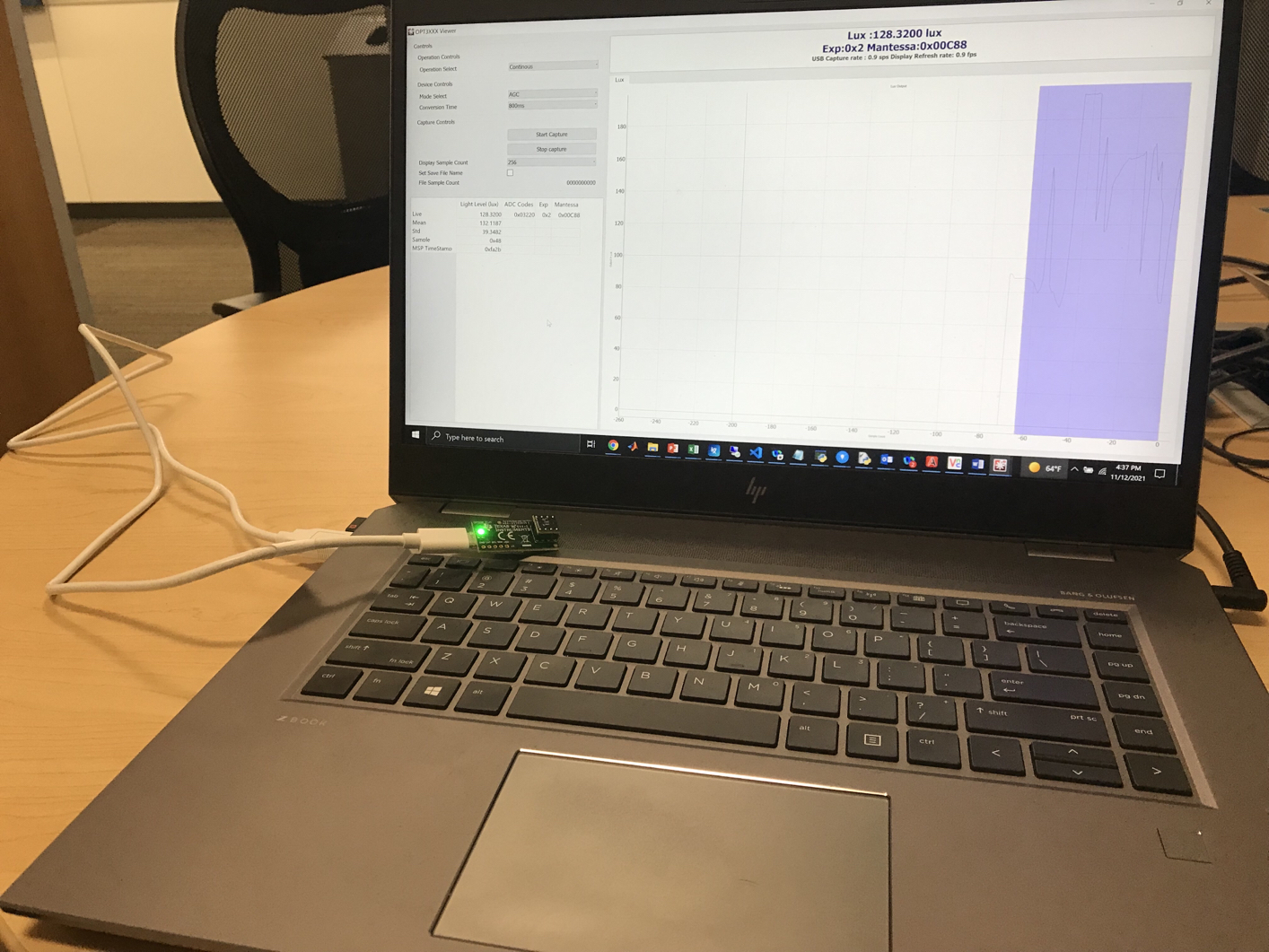SBOU274A December 2021 – January 2022 OPT3004
- Trademarks
- 1Overview
- 2OPT3004DTSEVM Hardware
- 3OPT3004DTSEVM Software
- 4Schematic, PCB Layout, and Bill of Materials
- 5Troubleshooting
- 6Revision History
2 OPT3004DTSEVM Hardware
Figure 2-1 shows the system setup for the OPT3004DTSEVM. The computer runs the graphical user interface (GUI) software that communicates with the OPTMBEVM board over a USB connection. The OPTMBEVM has a USB Type C port and ships with a USB-C to USB-A cable. The OPTMBEVM board acts as a bridge between the software running on the PC and the OPT3004DTS coupon board. The MSP430 on the OPTMBEVM recieves USB commands from the PC and communicates with the OPT3004DTS over I2C.
 Figure 2-1 OPT3004DTSEVM Hardware Setup
Figure 2-1 OPT3004DTSEVM Hardware Setup